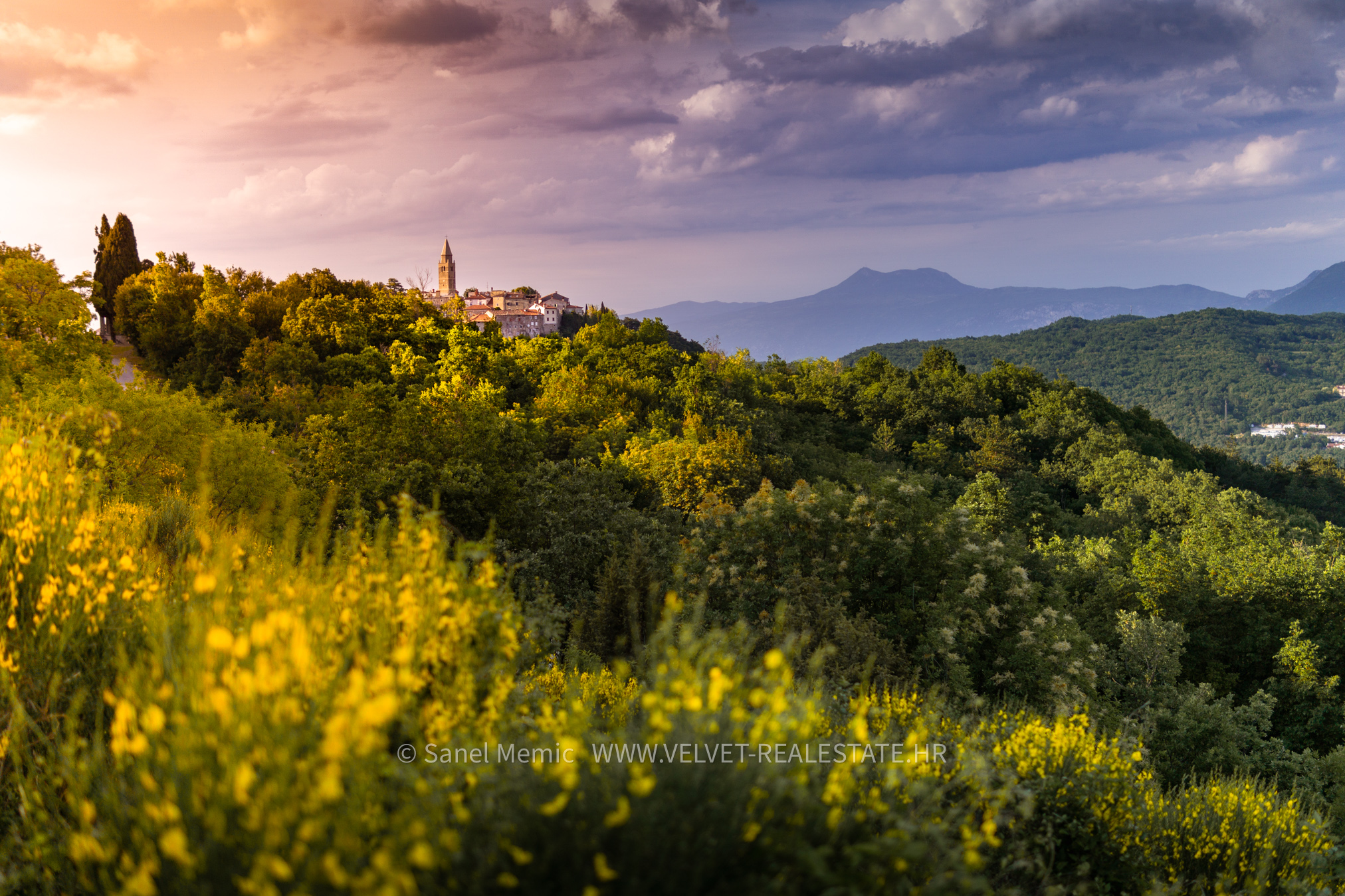 On the hill above Rabac lies the medieval Labin, whose old name Albona was first mentioned in 285 AD.
On the hill above Rabac lies the medieval Labin, whose old name Albona was first mentioned in 285 AD.Its old name Albona or Alvona is Illyrian of Celtic origin, and it seems that it was founded by the Celts in IV. century BC on the site of a former hillfort, although some historians mention that this place was established by the Illyrians in the 11th century BC. According to historians, Albon in Celtic means 'city on a hill', or 'high settlement'.
Stari Labin is an acropolis-type settlement. The current appearance was formed between the 16th and 18th centuries. It was once surrounded by walls from the 14th century, and in the 16th century it is surrounded by new fortifications. The city expanded again in the XVIII. and the 19th century, when the city walls were transformed into residential buildings and even palaces. At that time, the current main old town square called 'Crć' (today 'Titov trg') was formed. The old town is rich in cultural and monumental heritage. The oldest buildings are the remains of the church of St. Justa from the 9th century, and the remains of the parish church from the 11th century. It also abounds in Renaissance and Baroque patrician palaces. The Renaissance palace of the Scampicchio family from the 15th century and the praetorian palace from 1555 with Renaissance bifores are well known. In the 17th century, the baroque palaces Franković-Vlačić, Manzini and Negri were built. The Battiala-Lazzarini Palace from the 18th century stands out, one of the best preserved and most representative baroque palaces in Istria. Today it houses the National Museum of the Labin Region, with a rich archaeological, ethnographic and cultural-historical collection. The Museum also has a replica of the mining horizon, which is unique in Istria. The City Theater (Circolo) was built in 1843, and was created by renovating the grain storage from 1539. The parish church of St. Mary took its present form in the 14th century, and during the 16th and 17th centuries it was rebuilt and expanded. The bell tower was built in 1623 and was opened in the summer. Between the parish church and the Battiala-Lazzarini palace there is a smaller chapel from the 18th century, dedicated to St. Stjepan, with one of the most beautiful and luxurious Baroque church facades in Istria. Within the city walls is the chapel of St. Mary of Carmel from 1615. The city gate of St. Flora from 1646. The main square is dominated by a loggia (city lodge) from the 17th century, and the city palace was built in 1900, where the city administration is today.
Labin's Old Town Square is said to be one of the most beautiful in Istria, today it is a place of gathering and entertainment, where you can find restaurants, pizzerias and the famous city cafe "Velo kafe".
The hometown of Matija Vlačić, reformer and collaborator of Martin Luther, is today a cultural and administrative center. It is rare that the richness of architecture and cultural and historical monuments is so charmingly combined with numerous art studios, which is why it is also called the city of artists.
We definitely recommend that you enjoy its charm through all seasons, although we personally prefer the time when a weaver's broom (Spartium junceum) blooms at its foot, which revives and awakens it ...
This website uses cookies and similar technologies to give you the very best user experience, including to personalise advertising and content. By clicking 'Accept', you accept all cookies.
